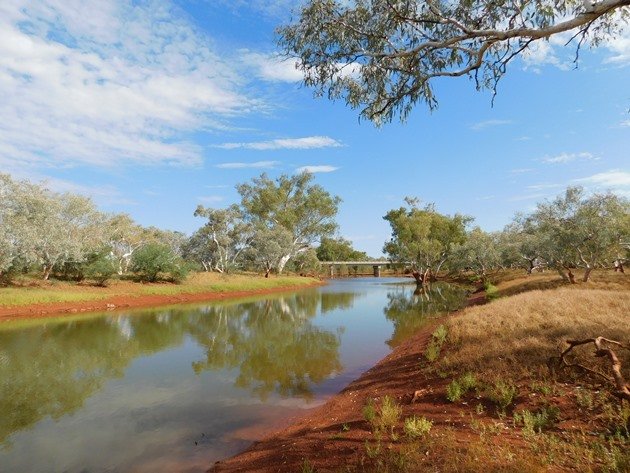
Last week I told you about our lucky find at the Fortescue River between Nullagine and Newman in the Pilbara region of Western Australia. It was our first encounter of Yellow-billed Spoonbills breeding and they had found the perfect environment. Of course, it was not just perfect for them, but many other birds. We only walked about 700 metres from the Fortescue River Bridge, but encountered a lovely variety of birds.
When we first got out of our vehicle near the bridge we soon observed Peaceful Doves, White-plumed Honeyeaters, Black-fronted Dotterels, Whistling Kites, Magpie-larks, Willie Wagtails, Torresian Crows, Fairy Martins and a Great Egret. It was not much further along the riverbank that we encountered our first Yellow-billed Spoonbill in flight and decided to continue along to see what else was about. Waterbirds were well represented with an Australian Darter sunning itself on the bank, Little Black Cormorants feeding, Little Pied Cormorants, Pacific Black Ducks, Australian Shelducks, Australian Wood Ducks, a White-faced Heron and a lone Australian Pelican.
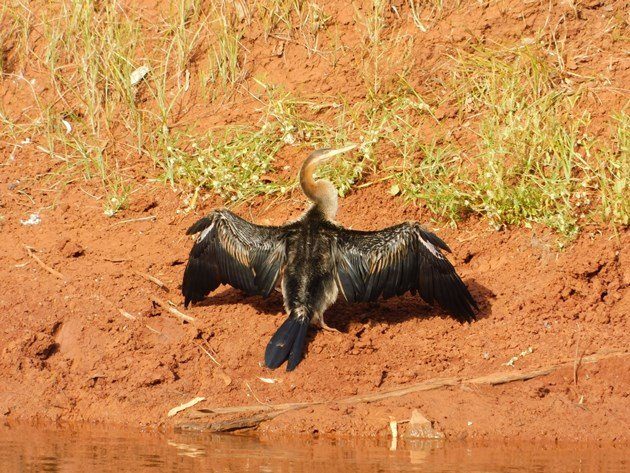
Australian Darter
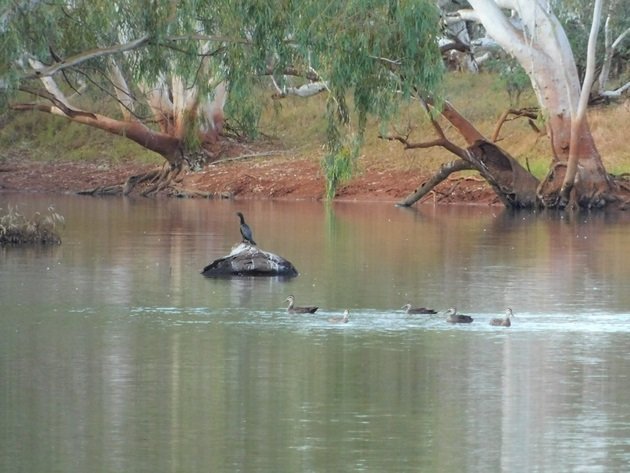
Little Black Cormorant and Pacific Black Ducks
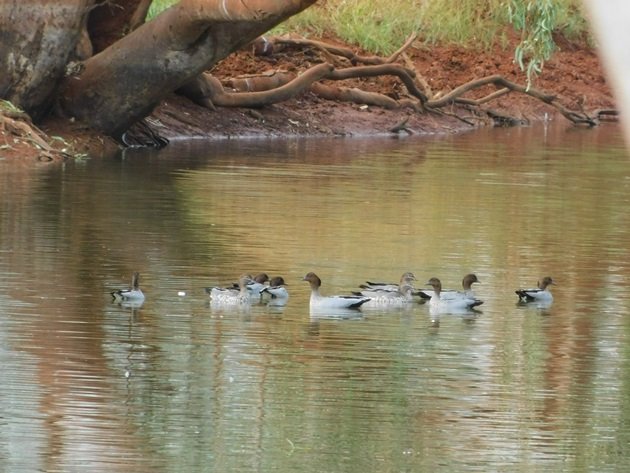
Australian Wood Ducks
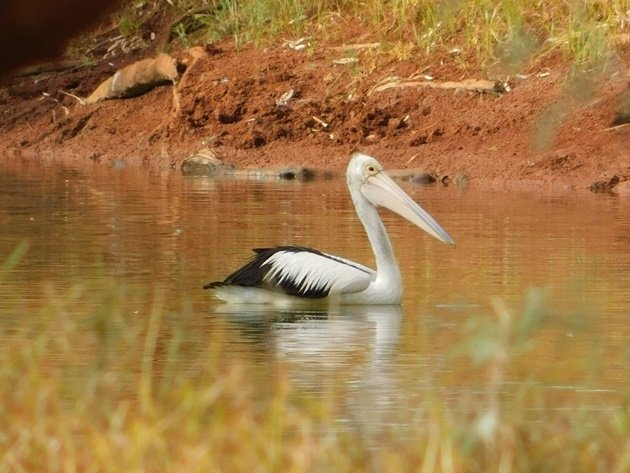
Australian Pelican
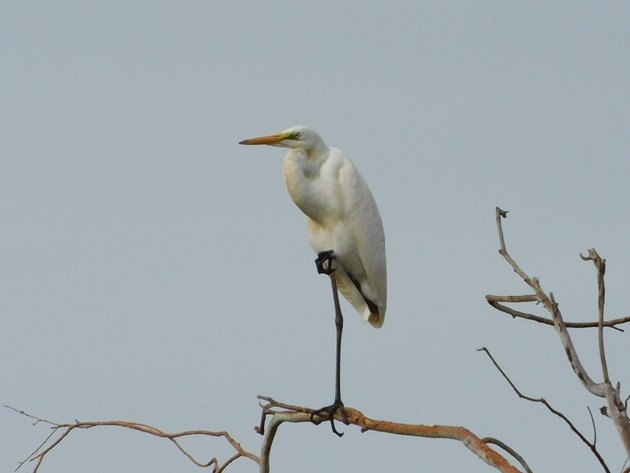
Great Egret
The surrounding trees were also busy as we walked along the riverbank and we soon added Diamond Doves, Zebra Finch, Budgerigars, Cockatiels, Black-tailed Treecreepers, Grey-crowned Babblers, Blue-winged Kookaburra, Tree Martins, Sacred Kingfisher, Black-faced Cuckoo-shrike, Yellow-throated Miners, Black-faced Woodswallows, Black Kite, Crested Pigeon and Western Bowerbird to our list. The trees were also busy with Australian Ringnecks, Galahs and Little Corellas.
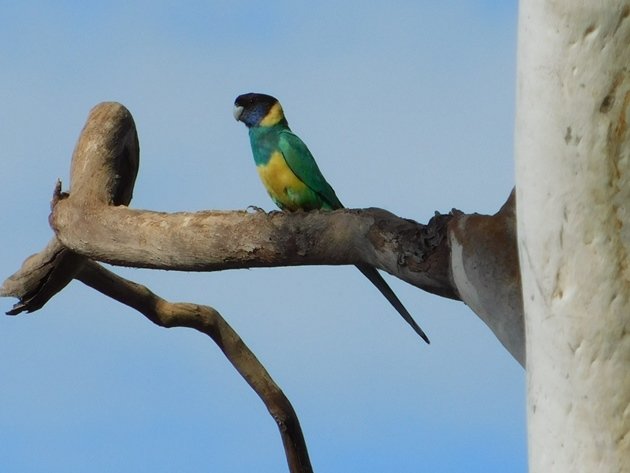
Australian Ringneck
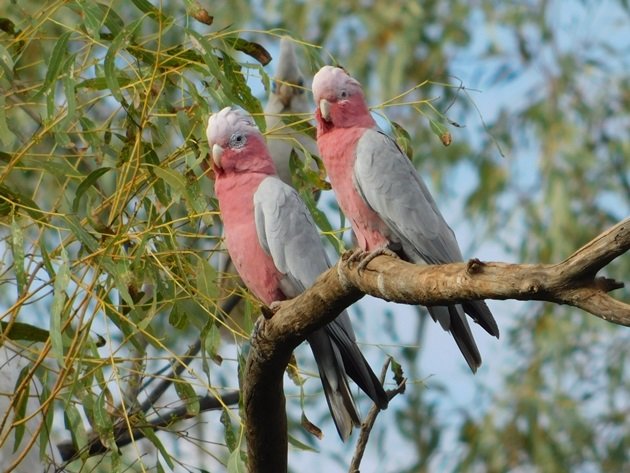
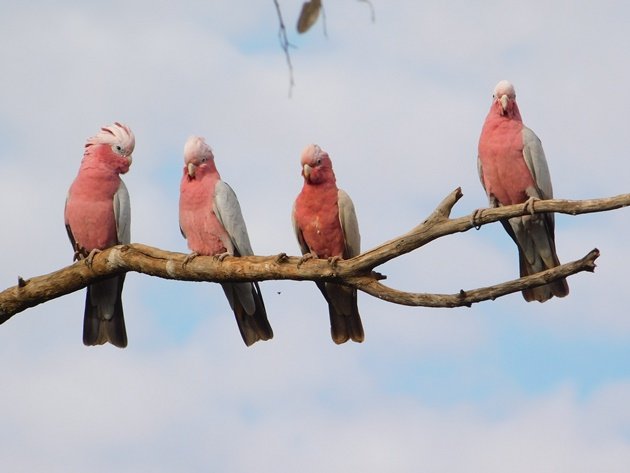
Galahs
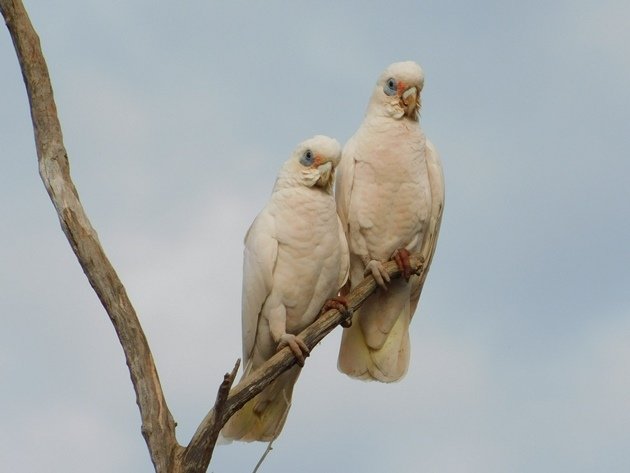
Little Corellas
We accidentally disturbed an Australian Owlet Nightjar, which promptly flew into a great hollow in a tree!
Although we had only gone a few hundred metres we had observed a great variety of birds and it was well worth the stop. Most rivers in the north of Australia vary considerably at different times of year and they are not always accessible or may not even contain water. I would recommend stopping and exploring whenever and wherever you can!











Leave a Comment